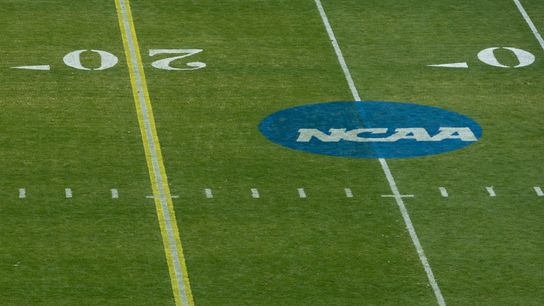A step remains, but Monday's landmark preliminary approval from U.S. District Judge Claudia Wilken in the House vs. NCAA case is a significant step forward in the revenue-sharing, collegiate athletes' quest to be paid for their efforts.
The settlement, agreed upon by NCAA legal counsel and the representatives for the plaintiffs in the case, is for multiple billions of dollars and could begin a nearly $3 billion payout -- revenue distribution -- as part of the case as soon as midyear 2025.
However, legal experts urge that the "preliminary" qualifier on the matter reflects that the case is not wrapped up neatly with a bow.
A big legal win today for the NCAA & plaintiffs' attorneys with Judge Wilken preliminarily approving the multicase, multibillion dollar antitrust settlement, but "preliminarily" is a crucial word. Other hurdles remain and could muddy the waters. I'll have more on @Sportico soon. pic.twitter.com/6U6O2lPXxt
— Michael McCann (@McCannSportsLaw) October 7, 2024
If this settlement receives final approval in the coming weeks or months, student-athletes then will begin to receive revenue-distribution payments from participating NCAA member institutions in the case. The NCAA also is responsible for backpay in the matter on its side of the fence.
But the general sum is in the $22 million per year, per school in revenue distribution; individual schools and or conferences are expected to discuss how best to disperse those funds, which won't be automatically even payments among all student-athletes of every sport at an institution.
Numerous sources have told FootballScoop that models discussed among various Power Conference programs, as well as Notre Dame, include a 50-50 split that sends approximately $11 million to the football program at an institution and the other $11 million to the remaining scholarship athletics program.
Sources further indicated to FootballScoop that a 50-50 split also could give way to something closer along the lines of 60-40 for football and the remaining sports, based on the actual revenue numbers derived by the "front porch" sport at so many schools.
If formally given full approval, the suit also specifies that the $22 million per-school figure automatically increases by 4% on annual basis across the duration of the agreement.
Schools already are trying to adjust budgets and generate additional revenue streams to prepare for this new $22 million line-item expense that's now one step closer to becoming a formal part of their athletics operating budgets.
"Donor fatigue" is the industry buzzword, with many schools trying to figure out how to get more money flowing into their programs and perhaps away from the third-party collectives as they seek ways to fund this settlement payment.
Tennessee, for example, announced last month that it would add an entertainment tax to its football tickets beginning in 2025 to help fund this new revenue-sharing expense.
Other schools are exploring various budget cuts, most notably to men's sports, sources tell FootballScoop, in addition to seeking to bring more of the monies in-house.
Notre Dame just last month announced the addition of RALLY, a "full-service NIL agency" in-house.
